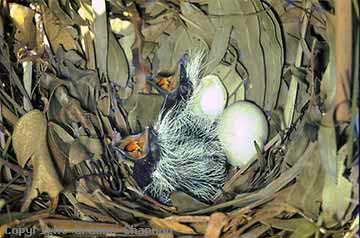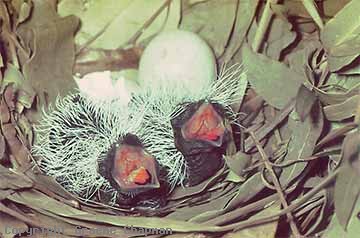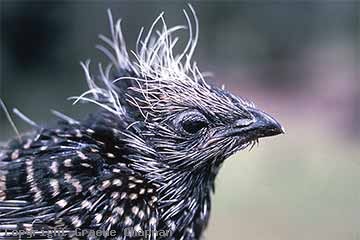Australian Birds
Pheasant Coucal
Centropus phasianinus
(Viewing 4 of 9 photos)
|

Of the 30 species of coucals worldwide, the Pheasant Coucal is the only one widespread in Australia. A common resident of northern and eastern Australia it extends through coastal regions as far south as Ulladulla in NSW and into the Pilbara region of W.A. Thick long grass, rank weedy growth, dense vegetation around swamps and cane fields are all suitable habitat. The presence of Sword Grass, Gahnia sieberiana is often a good indicator of suitable habitat - it is a favourite nest site. Pheasant Coucals live in permanent territories and spend most of their time on the ground out of view, only occasionally hopping and flapping awkwardly up to a lookout tree where they can survey the scene, maybe proclaim their territory with a calling session or even just bask in the sun. When calling, pairs sometimes duet together, greatly emphasising the effect and likened by some to water bubbling from a big bottle.(Listen on sound page) In winter, Swamp Pheasants as they are sometimes called (a misnomer - they are actually related to cuckoos) moult into a straw-coloured plumage which makes them quite cryptic in drier grassy situations. They nest fairly late in the year, often into January. At a nest I once photographed, one of the adults brought in a succession of small pink objects which proved to be baby mice because eventually it arrived with an adult mouse. It fed the mouse to one of the nestlings which had quite a struggle to swallow it whole. Young coucals are very odd looking (some say ugly!) creatures indeed - black skin covered in long white hairs at first - and brightly patterned tongues. They leave the nest as soon as they are feathered, long before they can fly.
|

349002 ... Pheasant Coucal feeding nestling a whole mouse, which it swallowed! (with difficulty). |

349004 ... Nests are usually lined with green leaves and built into the base of a thick clump of grass or sword sedge. |
 |

349005 ... Hatchlings are covered in coarse white hair and have distinctively coloured tongues. |

349006 ... They leave the nest long before they can fly. |
 |
Previous 1 2 3 Next
Return to Photo Library page




